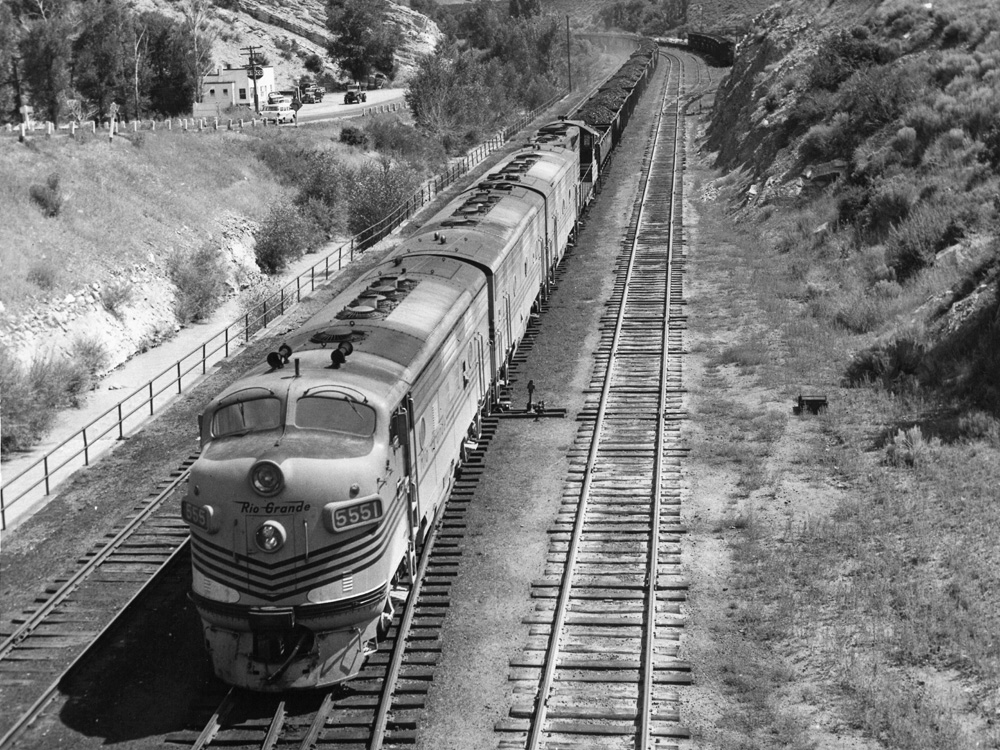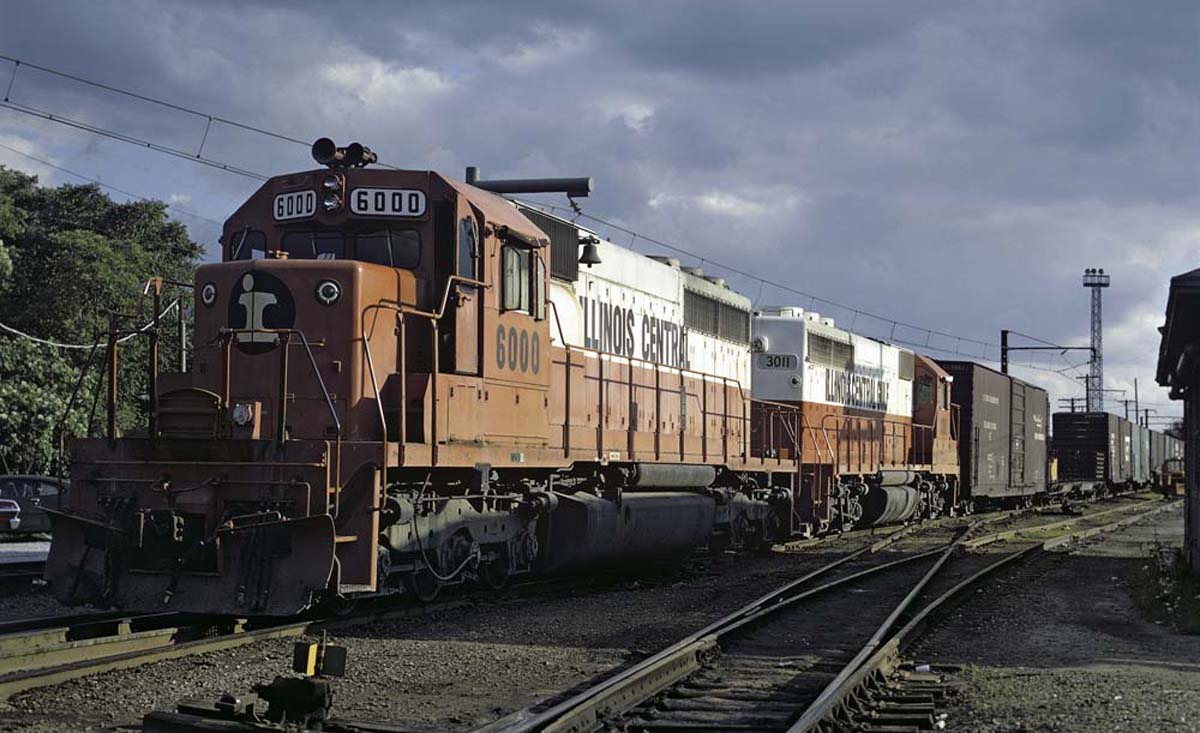
Q: What diesels to pull a 50s coal train? I’m building an “N” scale layout set in the 1950s. I plan to run two loops independent of the rest of the layout, up high, at the back. One loop will have a train running counter-clockwise, consisting of a locomotive and four loaded coal hoppers. When it runs out of sight behind the backdrop, an identical train with empty hoppers will run clockwise on the other loop. The effect will be a short train carrying coal from a mine to a processing plant, then returning with empties. My question is, what type of diesel engines would be appropriate to pull this train? – Frederick Wilson
A: In the early 1950s, most drag freights were still being handled by steam locomotives. This was because diesels were still rather new, and thus were assigned to priority jobs like passenger trains and hotshot fast freights. Plus, fuel for steam locomotives was plentiful and cheap on a coal-hauling line.
But you asked about diesels. By the late ’50s, steamers were mostly phased out, diesels were prevalent, and all kinds of trains – including coal drags – were being headed up by cab units and hood units alike. The most common motive power for heavy freights was a multi-unit lash-up of F units, usually in an A-B-A or A-B-B-A arrangement. Whether those locomotives were Electro-Motive Division FTs, F3s, and F7s or Alco FA1/FB1 and FA2/FB2 sets was up to the railroad in question, though EMDs were more popular.
Hood units made their debut in this era, too, including EMD’s early Geeps and SDs, along with Alco’s RS and RSD diesels. (General Electric didn’t get into the road-switcher business until 1960.) If you’re the kind of modeler who thinks a hood unit looks more appropriate hauling freights, hooking up a brace of GP7s or RS3s to a coal train would certainly be plausible.
Since you’re only talking about a four-car train (plus caboose, presumably), you could pull your coal trains with a single locomotive. After all, a prototype railroad wouldn’t assign multiple units to a train that short unless it was expected to pick up considerably more cars farther down the line. So, depending on the prototype and specific part of the ’50s you’re modeling, my recommendation would be for a single GP7 or GP9. Atlas offers both in N scale in multiple road names. If you’re an Alco fan, Atlas has also announced a forthcoming limited run of RS3s.
If you prefer a cab unit like an EMD F3 or F7, you’ll have a broader selection, including Broadway Limited Imports and Kato USA. Other manufacturers (like Intermountain and Bachmann) have in the past offered appropriate models that might still be on the shelves of your local hobby store. You could use any of these early diesels to pull a 50s coal train. Happy hunting!
For more on modeling coal operations, check out our downloadable digital publication, “Building a coal-hauling model railroad,” in the Kalmbach Hobby Store.
Send us your questions
Have a question about modeling, operation, or prototype railroads? Send it to us at AskTrains@Trains.com. Be sure to put “Ask MR” in the subject.













